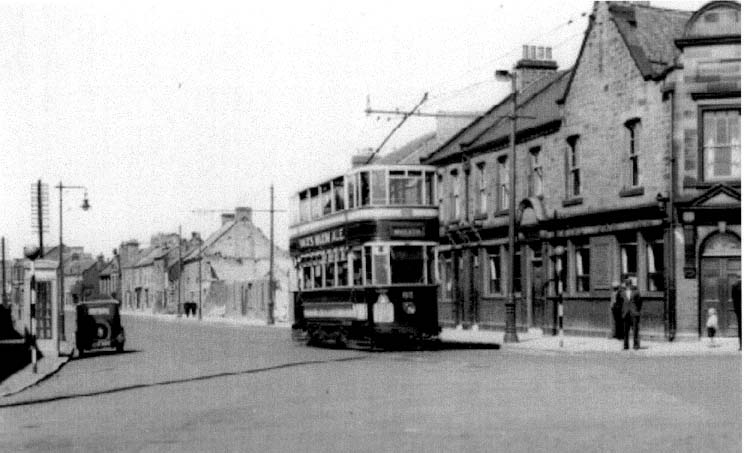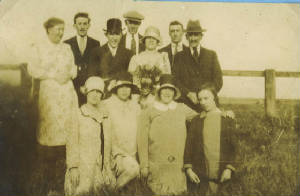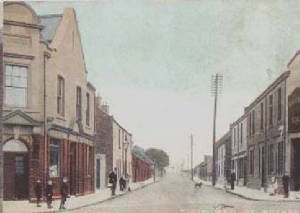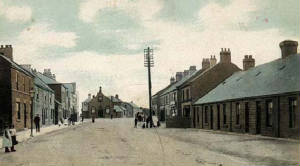|

A tram arriving at the Wrekenton
terminus from Gateshead.
Services were introduced through to Wrekenton
in 1910 and replaced by buses in 1950.
Wrekenton is where Pritchard met Cottam. Nellie Cottam (1904) was commissioned
as a Salvation Army Officer in 1927 and posted to Durham as a Lieutenant at the Wrekenton Salvation Army Corps. The story goes:- George Pritchard (1897) lived in Eighton Banks, liked a drink and
spent quite a lot of his leisure time in the Half Moon public house. The Salvation
Army held their Sunday evening ‘Open Air Meeting’ close by and one Sunday George stood listening with some of
his mates and fell head over heels for this Salvation Army Officer. He attended
a meeting, ‘signed the pledge’ never to drink again and became a ‘soldier’. He had set his sights
on Nellie and eventually won her over. He proposed and she eventually accepted. It was a very big decision for her because as a Salvation Army Officer she was only
allowed to marry another Officer. It meant that she had to resign her commission.

Family photograph taken to celebrate the engagement
of Nellie Cottam (1904) and George Pritchard (1897)
in 1927. pictured from left to right:-
back row:- Margaret Pritchard (1870) Daniel Pritchard (1905)
George Pritchard (1897), Edward Pritchard (1907)
Nellie Cottam (1904), William Pritchard (1903)
and Robert Pritchard (1868)
Front row:- Gladys Pritchard (1900), Margaret Pritchard
(1909),
Elizabeth Pritchard (1894) and Sarah Jane Pritchard (1910)
It
wasn’t until about 1822 that Wrekenton was established as a village. Prior to that date it was just one large house,
a Public House, the Coach and Horses and a row of cottages on the Durham Road. Wrekenton was chosen as the name because the ancient roman
road known as Wrekendyke was close by. As the village grew it became a very rough
place indeed with a considerable amount of crime and disease. Most of those that
were employed were either miners or quarrymen but the village had more than its share of vagrants. There were many slums and much of this housing still existed in the village in 1927 when George and Nellie
met.

Springwell Road, Wrekenton
The
whole area was still suffering from the ravages of the 1926 miners strike when George and Nellie decided to marry. Following their engagement they left Co. Durham and went to live with Nellie’s mother in Denton, Lancashire.

Wrekenton High Street
|

